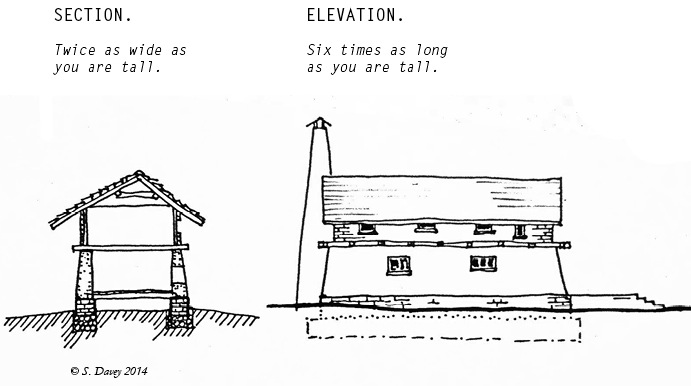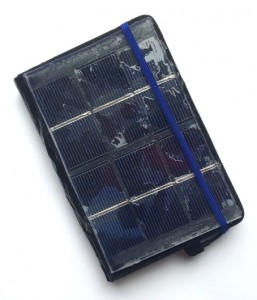 The conceit behind The Knowledge is that it is the single book that condenses down the kernels of all the most important understanding and know-how you would want to preserve if all else were lost. The premise is that this book serves as a quick-start guide to rebooting civilisation itself and enabling survivors of some hypothetical apocalypse to accelerate their way through history a second time around.
The conceit behind The Knowledge is that it is the single book that condenses down the kernels of all the most important understanding and know-how you would want to preserve if all else were lost. The premise is that this book serves as a quick-start guide to rebooting civilisation itself and enabling survivors of some hypothetical apocalypse to accelerate their way through history a second time around.
But of course this is impossible. If you were to have any hope of preserving enough vital knowledge and accelerating recovery you’d want more than a single paperback, and lots of diagrams and step-by-step practical guides as well.
Using the traditional technologies explained in The Knowledge — words printed onto bundles of sheets of pulped-up trees — you would need an entire library, its shelves stuffed with practical books, to provide enough preserved information. (One of the things I was most smug about whilst researching for The Knowledge was when I realised that I could explain how to make your own paper from scratch, your own ink, and how to construct a rudimentary printing press — it’s almost as if within the pages of the book it contains the genetic instructions for it’s own reproduction. It is an inanimate object that can replicate itself like an organism. In principle, and with tongue firmly in cheek, of course, only a single copy of the book would need to survive the apocalypse, and it tells you how to make endless copies for everyone that needs one).
The problem would be how on Earth would you preserve this huge bulk of paper books over long periods of time, or have enough such libraries dotted around the world to have one near enough to any surviving community (see the articles here on The History of the Total Book, and other Similar Projects). But with modern technology, we are now released from this traditional limitation. Nowadays you can buy, for next to no money at all, a Kindle or other e-reader device with memory to store 10,000 books.
You can hold an entire library in the palm of your hand.
If you really wanted to, you could load a copy of The Knowledge, along with thousands of other practical guides (see the book’s bibliography for a complete list of resources, many free to download), onto a single Kindle and stash it in a safe place, just in case…
But if civilisation ever did collapse, and the grid went down, you’d risk the pathos of having the world’s information saved in the palm of your hand but may struggle to recharge the device and actually access it all (the advantage of a paper-based book is that it requires no supporting technologies to access the information, save your own eyes).
The solution would be to create your own apocalypse-proof Kindle. Hardened, and with integrated solar panels so that it could recharge itself indefinitely if the grid ever went down.
And this is exactly what I’ve made. Working with Max and Dan of the Demand Energy Equality initiative I’ve modded and upgraded a cheap second-hand Kindle to help safeguard human knowledge.
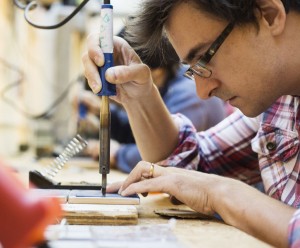 I started with an old 3rd generation Kindle, as this model offers a proper keyboard and does not have a vulnerable touch-screen. I also think the read-back voice functionality gives my finished device a wonderful feel of the Hitchhiker’s Guide to the Galaxy! The solar panels themselves are monocrystalline photovoltaic cells, which were reclaimed from a closed-down solar panel factory. I connected together the individual PV cells into two 2×3 arrays using standard tabbing wire. These were attached to the outside of a fold-open case using EVA plastic sheets and a heat gun. Finally, the fragile silicon wafer solar cells are protected with rigid panels of UV-treated polycarbonate, again bonded using EVA. A bit of wire-stripping and soldering, and all the electronics were connected to the mini-USB charging port of the Kindle.
I started with an old 3rd generation Kindle, as this model offers a proper keyboard and does not have a vulnerable touch-screen. I also think the read-back voice functionality gives my finished device a wonderful feel of the Hitchhiker’s Guide to the Galaxy! The solar panels themselves are monocrystalline photovoltaic cells, which were reclaimed from a closed-down solar panel factory. I connected together the individual PV cells into two 2×3 arrays using standard tabbing wire. These were attached to the outside of a fold-open case using EVA plastic sheets and a heat gun. Finally, the fragile silicon wafer solar cells are protected with rigid panels of UV-treated polycarbonate, again bonded using EVA. A bit of wire-stripping and soldering, and all the electronics were connected to the mini-USB charging port of the Kindle.
And voila!
A store of the most vital human knowledge, preserved in a highly portable form, and capable of keeping itself recharged for generations…
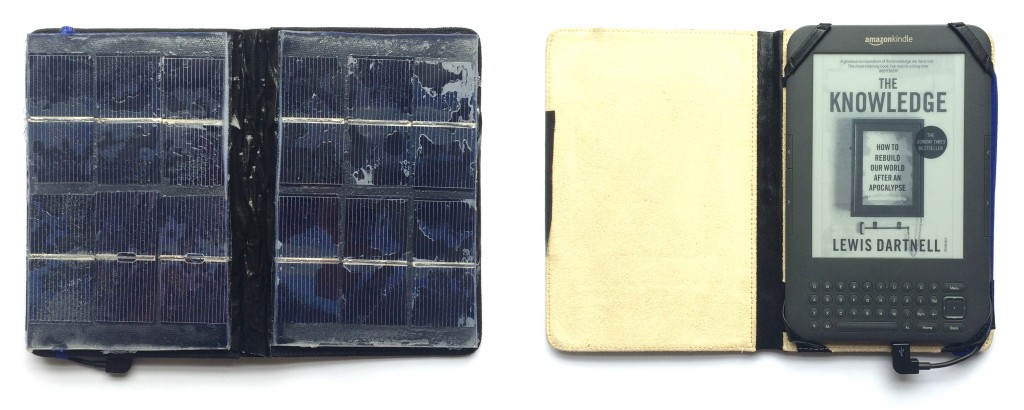
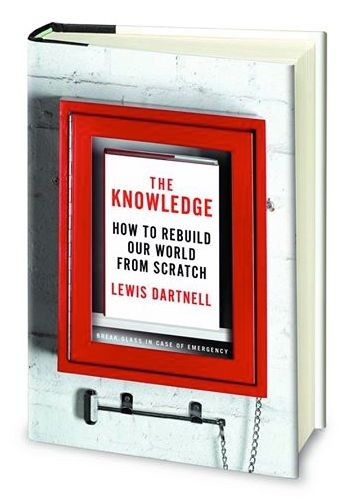 Want to read more about the behind-the-scenes fundamentals of how our modern world works, and how you could reboot civilisation if you ever needed to...? Check out The Knowledge - available now in paperback, Kindle and audiobook.
Want to read more about the behind-the-scenes fundamentals of how our modern world works, and how you could reboot civilisation if you ever needed to...? Check out The Knowledge - available now in paperback, Kindle and audiobook.


 The conceit behind The Knowledge is that it is the single book that condenses down the kernels of all the most important understanding and know-how you would want to preserve if all else were lost. The premise is that this book serves as a quick-start guide to rebooting civilisation itself and enabling survivors of some hypothetical apocalypse to accelerate their way through history a second time around.
The conceit behind The Knowledge is that it is the single book that condenses down the kernels of all the most important understanding and know-how you would want to preserve if all else were lost. The premise is that this book serves as a quick-start guide to rebooting civilisation itself and enabling survivors of some hypothetical apocalypse to accelerate their way through history a second time around. I started with an old 3rd generation Kindle, as this model offers a proper keyboard and does not have a vulnerable touch-screen. I also think the read-back voice functionality gives my finished device a wonderful feel of the Hitchhiker’s Guide to the Galaxy! The solar panels themselves are monocrystalline photovoltaic cells, which were reclaimed from a closed-down solar panel factory. I connected together the individual PV cells into two 2×3 arrays using standard tabbing wire. These were attached to the outside of a fold-open case using EVA plastic sheets and a heat gun. Finally, the fragile silicon wafer solar cells are protected with rigid panels of UV-treated polycarbonate, again bonded using EVA. A bit of wire-stripping and soldering, and all the electronics were connected to the mini-USB charging port of the Kindle.
I started with an old 3rd generation Kindle, as this model offers a proper keyboard and does not have a vulnerable touch-screen. I also think the read-back voice functionality gives my finished device a wonderful feel of the Hitchhiker’s Guide to the Galaxy! The solar panels themselves are monocrystalline photovoltaic cells, which were reclaimed from a closed-down solar panel factory. I connected together the individual PV cells into two 2×3 arrays using standard tabbing wire. These were attached to the outside of a fold-open case using EVA plastic sheets and a heat gun. Finally, the fragile silicon wafer solar cells are protected with rigid panels of UV-treated polycarbonate, again bonded using EVA. A bit of wire-stripping and soldering, and all the electronics were connected to the mini-USB charging port of the Kindle.
 The design of this ‘wood gasifier’ stove is exceedingly simple and it can be built in under an hour using only empty tin cans and a few very basic tools (
The design of this ‘wood gasifier’ stove is exceedingly simple and it can be built in under an hour using only empty tin cans and a few very basic tools (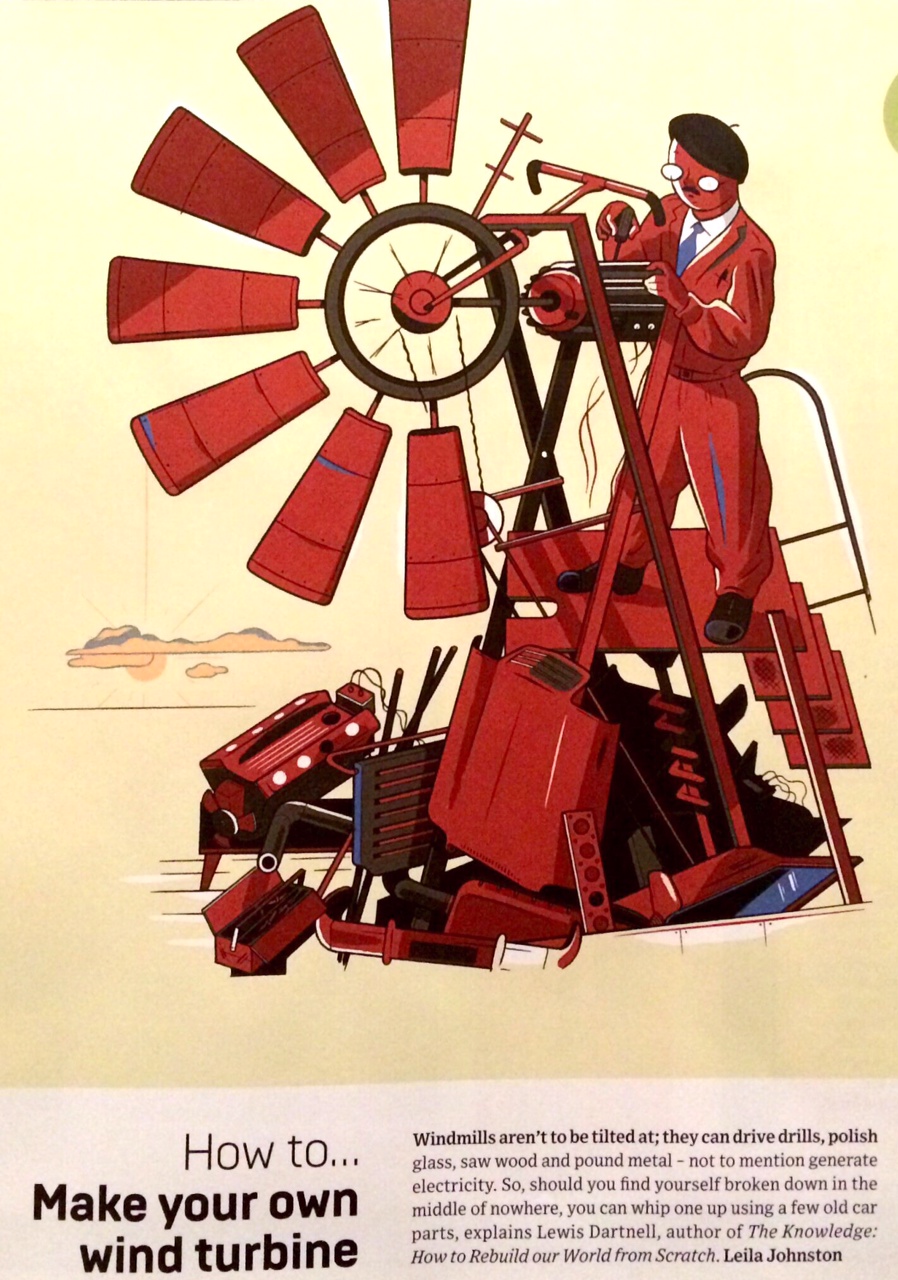 he
he  The article was on the news-stands in September, is still available on the Wired app on
The article was on the news-stands in September, is still available on the Wired app on 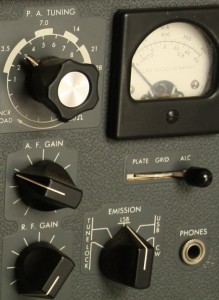 If our modern civilisation ever were to collapse – taking with it global communication technologies like the internet, satellites, cell phones and undersea cables – with the right knowledge it wouldn’t be too hard to reconstruct from scratch the means for communicating around the world. All you need is a radio set not much bigger than a couple of shoe boxes and a wire antenna strung between two trees. And the basic building block for electronics and reinstating long-distance radio communications, but still something you could build yourself, is the triode vacuum tube. Here’s how…
If our modern civilisation ever were to collapse – taking with it global communication technologies like the internet, satellites, cell phones and undersea cables – with the right knowledge it wouldn’t be too hard to reconstruct from scratch the means for communicating around the world. All you need is a radio set not much bigger than a couple of shoe boxes and a wire antenna strung between two trees. And the basic building block for electronics and reinstating long-distance radio communications, but still something you could build yourself, is the triode vacuum tube. Here’s how…